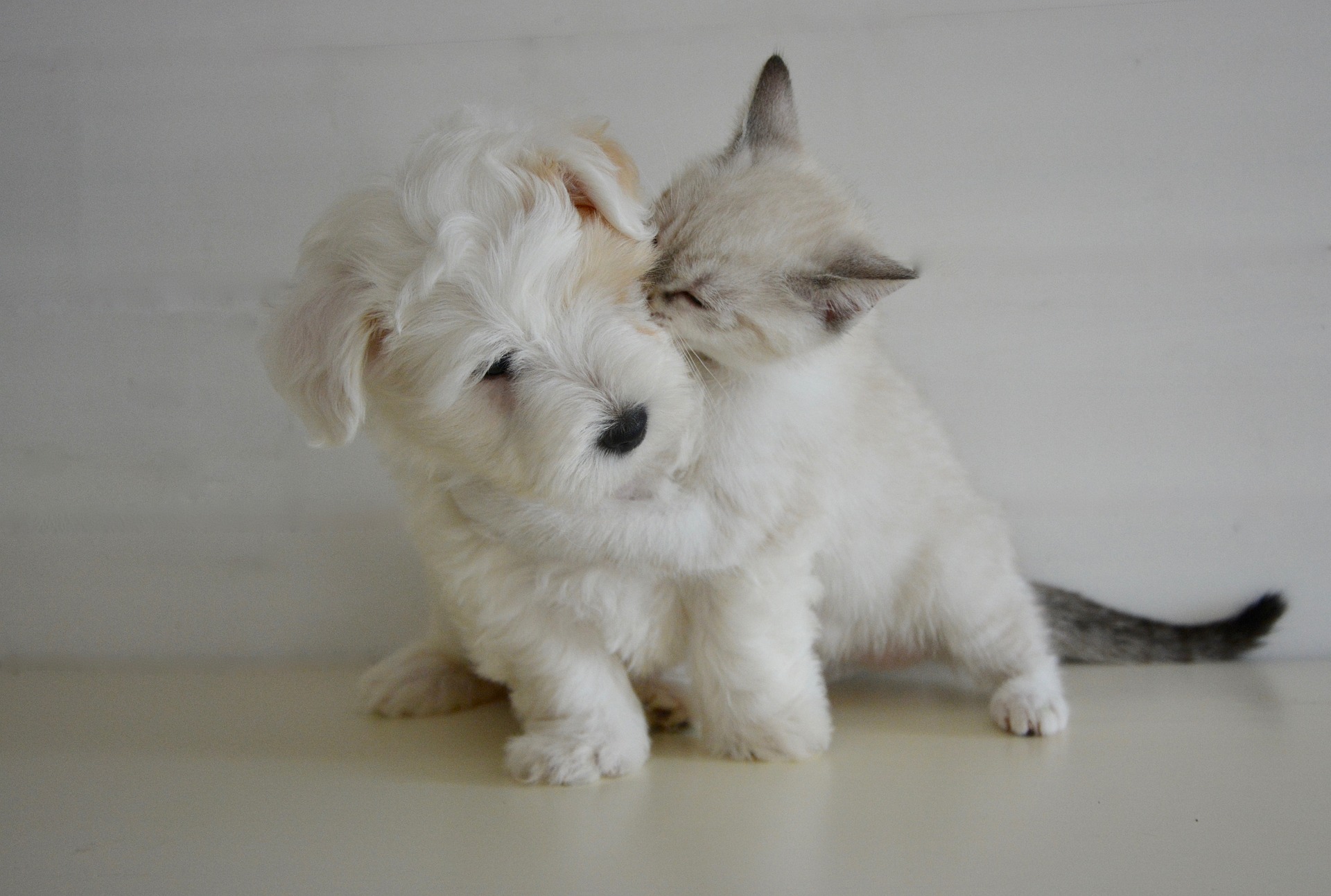
19 Apr Retained Deciduous Teeth (Baby Teeth) in Dogs & Cats
A dog or cat’s baby teeth are also known as deciduous teeth or primary teeth. Have you ever felt those sharp little needle teeth when playing with puppies and kittens? Those are their deciduous teeth.
Much like humans, dogs and cats have two sets of dentition: primary and permanent. Dogs have 28 deciduous teeth, which are replaced as 42 permanent teeth as they grow. Cats have 26 deciduous teeth and 30 permanent teeth.
Deciduous teeth begin erupting when your canine or feline is around 3-4 weeks of age. Permanent teeth begin erupting at 4 months of age and finish erupting by 7 months of age. It is important for the oral cavity to be thoroughly evaluated at every puppy/kitten visit to identify any deviations from the normal eruption pattern.
Are certain pets more likely to retain deciduous teeth?
Normal tooth eruption involves the deciduous tooth falling out or resorbing once the permanent tooth begins to erupt. Retained deciduous teeth are teeth that do not exfoliate once the permanent tooth erupts. This condition is seen most commonly in small breed dogs but can occur in medium to large breed dogs and cats.
The most common retained deciduous tooth is the upper canine tooth, followed by the lower canine tooth. Incisors are the third most common retained teeth. Occasionally, premolar deciduous teeth can fail to exfoliate.
What problems can arise due to retained deciduous teeth?
Retained deciduous teeth can cause multiple problems for a growing dog or cat. With a retained maxillary (upper jaw) canine tooth, the permanent tooth typically erupts immediately in front of the deciduous tooth. Subsequently, tartar accumulates between the two teeth leading to periodontal disease and eventual loss of the permanent tooth.
In the mandible (lower jaw), the permanent canine tooth will erupt inside of the deciduous tooth towards the tongue. These malpositioned teeth will often be in traumatic contact with soft tissues of the mouth and be very painful! Sharp teeth that press into the roof of the mouth can make even the sweetest puppy cranky.
Retained incisor and premolar teeth will lead to crowding, tartar accumulation, and subsequent periodontal disease. Additionally, when teeth do not follow the normal eruption pattern, it can lead to jaw malformation due to adverse interlocking. This adverse interlock will keep the maxilla and mandibles from growing properly and may inhibit the pet’s ability to eat in a traditional manner.
When the maxilla and mandibles are not in a normal relationship with each other it is called a malocclusion. Malocclusions that result from retained deciduous teeth are some of the most common orthodontic conditions the veterinary dental specialists at Animal Dental Care and Oral Surgery regularly treat.
What is the treatment for a retained deciduous tooth?
Once a retained deciduous tooth has been identified, it should most often be extracted. This is particularly true when the permanent tooth has already erupted. This violates the orthodontic “Rule of Succession”, which states that no two teeth should occupy the space that only one should be in.
A complete oral exam and dental radiographs need to be obtained under anesthesia to address persistent teeth. The retained tooth should always be removed in its entirety as broken roots can be quite painful and lead to infection. Our pets are oftentimes much more tolerant of oral pain than we would be in a similar situation. If a retained deciduous tooth is removed early, the permanent tooth has a greater chance of erupting in a normal pattern.
Avoiding retained deciduous teeth in your puppy or kitten.
Puppies and kittens should have their teeth evaluated closely at every visit to ensure the normal tooth eruption pattern is occurring. When a malocclusion is identified, the sooner it is addressed, the better. This will result in relieving associated pain sooner and usually provide a greater number of treatment options for a veterinarian to offer their pet owners.

